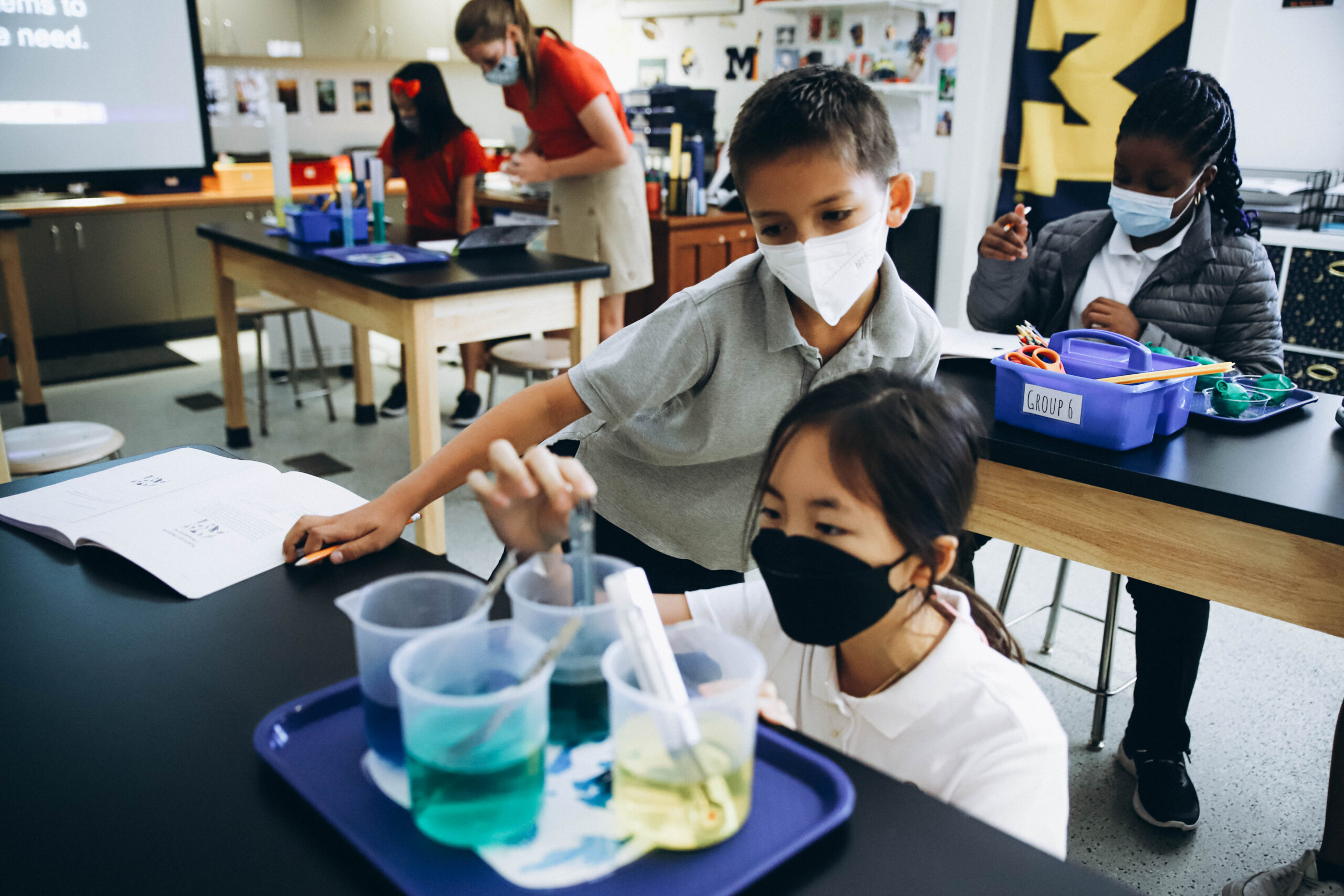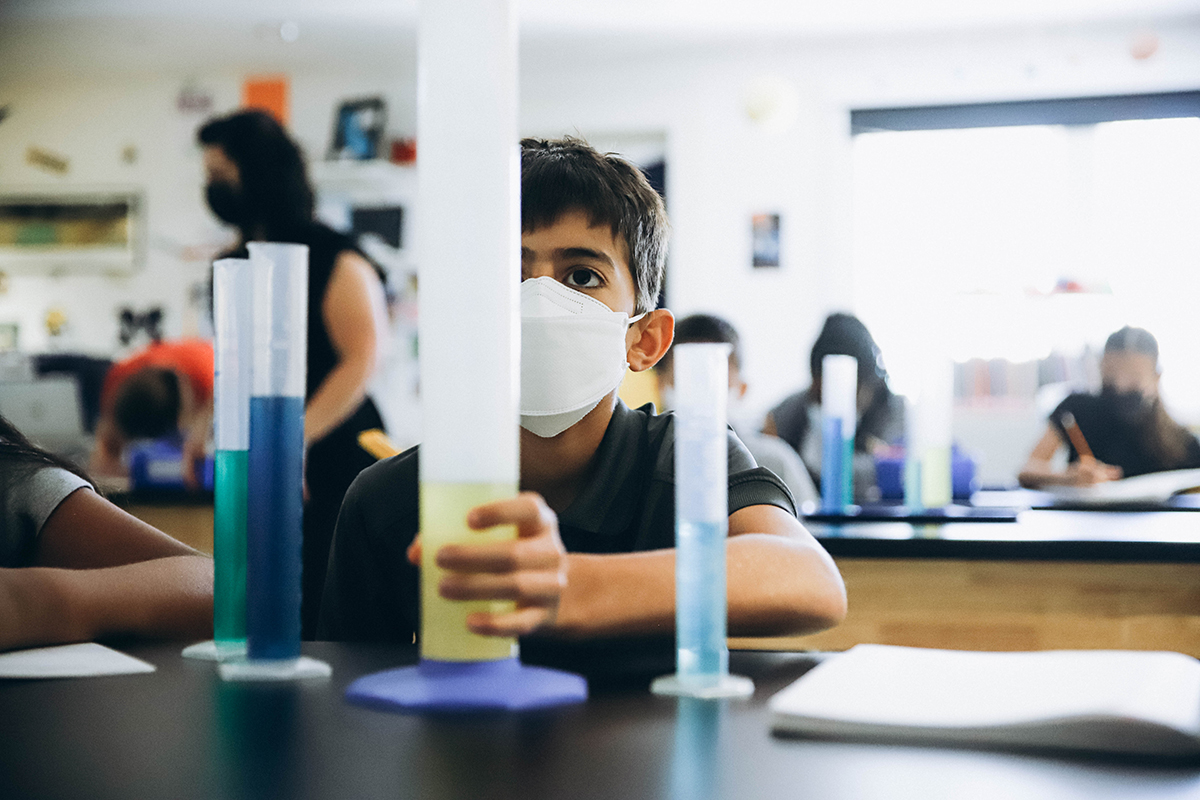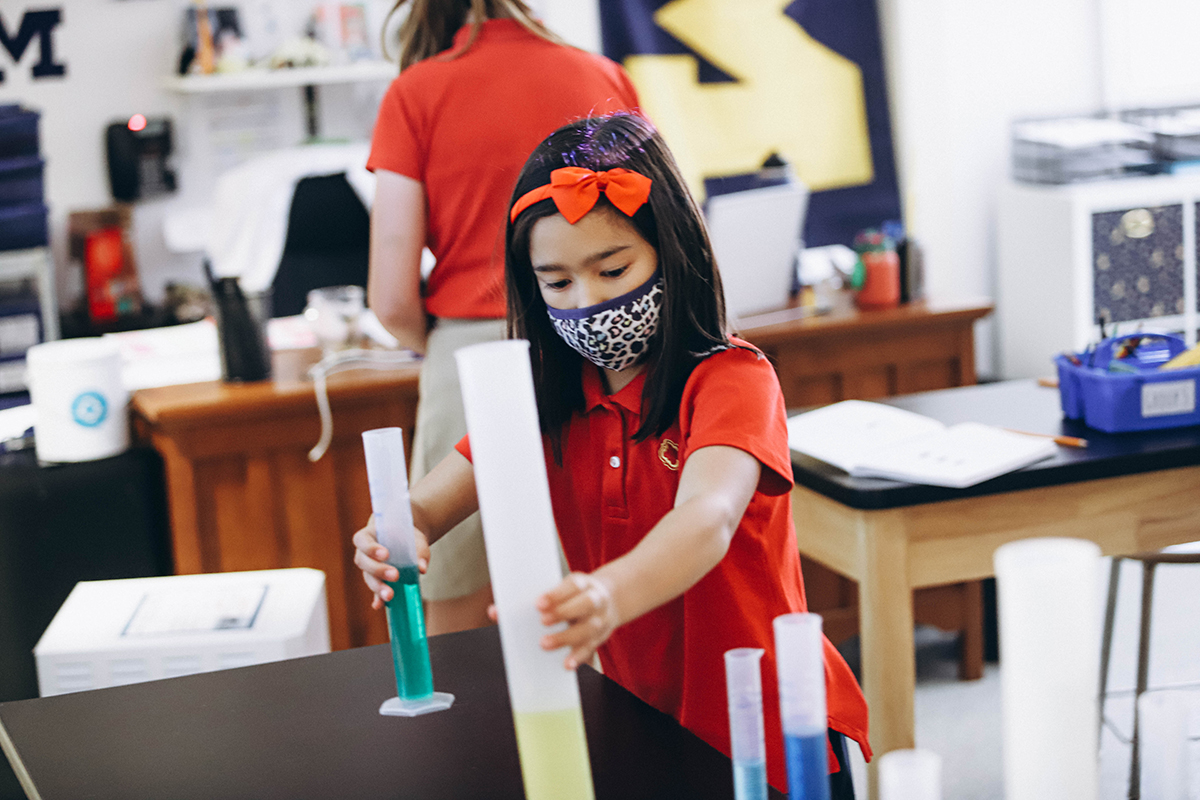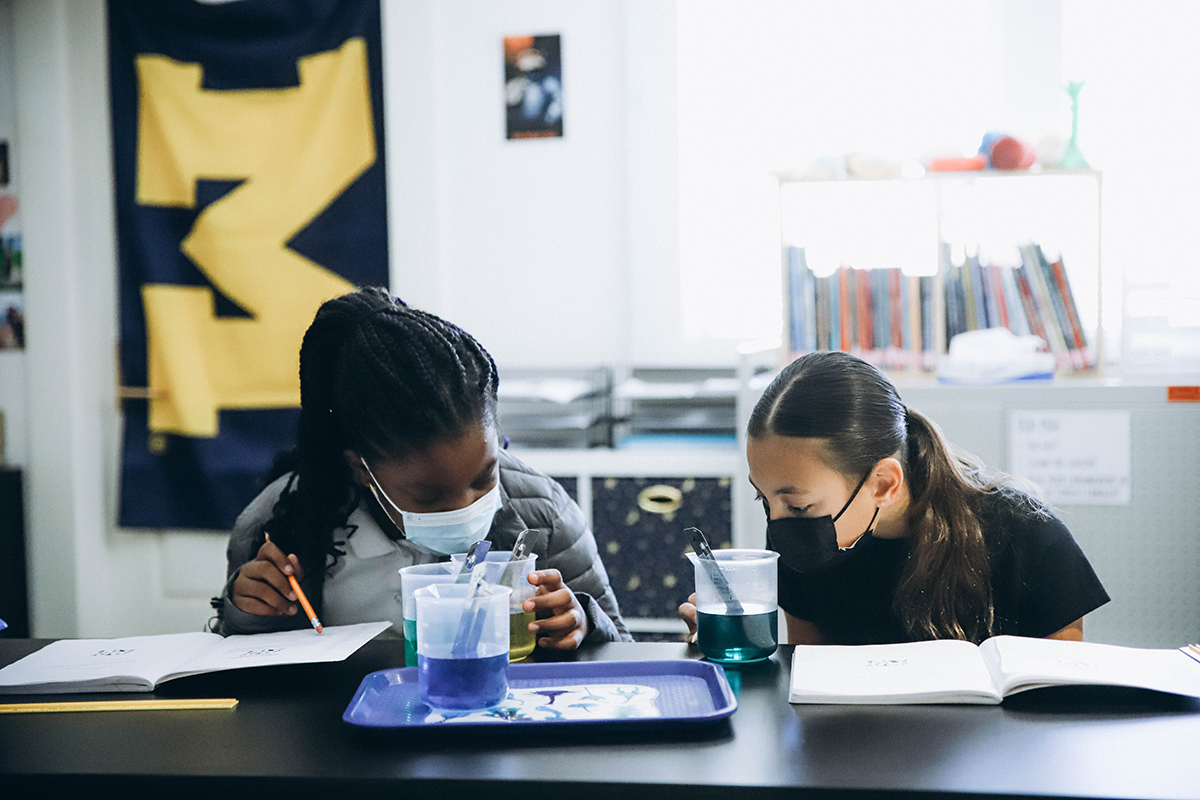
By Matthew Piechalak | [email protected]
“We have just crash-landed on another planet…,” reads the prompt to introduce Lauren St-John Lopez’s lesson to her Grade 5 Science students. “We do not know which plants are safe, but we have some tricks to find out which are safe to use.”
The creative, science fiction-based narrative is intended to engage the Lower School students and get them excited about what are routine––albeit important skills––to learn for young scientists.
“Rather than just handing out science equipment and having them practice without a clear purpose, I created a narrative to help give meaning to the lesson,” says Lauren. “I showed students an image of a distant (fictional) planet and told them that we crash landed. We established that the air was safe to breathe and the gravity did not prove to be an issue, but we need to find a safe food source, a way to stay hydrated, and medicine in case of injury or illness.”
The students were tasked with measuring the mass, temperature, length, and volume of different items to help them find what they needed. Each of the measurements relates to the fictional, unknown items that the students “found” on the planet, including fruit, juice from a flower, eggs, and mushrooms.


The mysterious flower found on the planet contains juices of various colors. The students carefully measure the volume of the liquids to determine which is safe to drink. The fruit, rumored to taste like a cross between a pineapple and a blackberry, is safe to eat if it is mature enough. The students need to measure the length to verify which pieces have grown enough to safely consume. The mysterious eggs found would make a great meal, however, some of the yolks have rotted. The students need to measure mass to make sure they are above 100 grams. The final challenge of the lab is measuring the temperature of fungi that can contain medicinal properties. The students are tasked with measuring the temperature of several mushroom mixtures to determine which is best for medical use.
“This lesson helps establish a baseline for future lessons,” says Lauren. “By having students practice using a variety of science equipment earlier in the year, it will allow for more precision and understanding when using the tools in future lessons. We can focus on the question trying to be answered in future lessons, rather than focusing on how to measure using a graduated cylinder, or how to ‘tare your scale’.”





